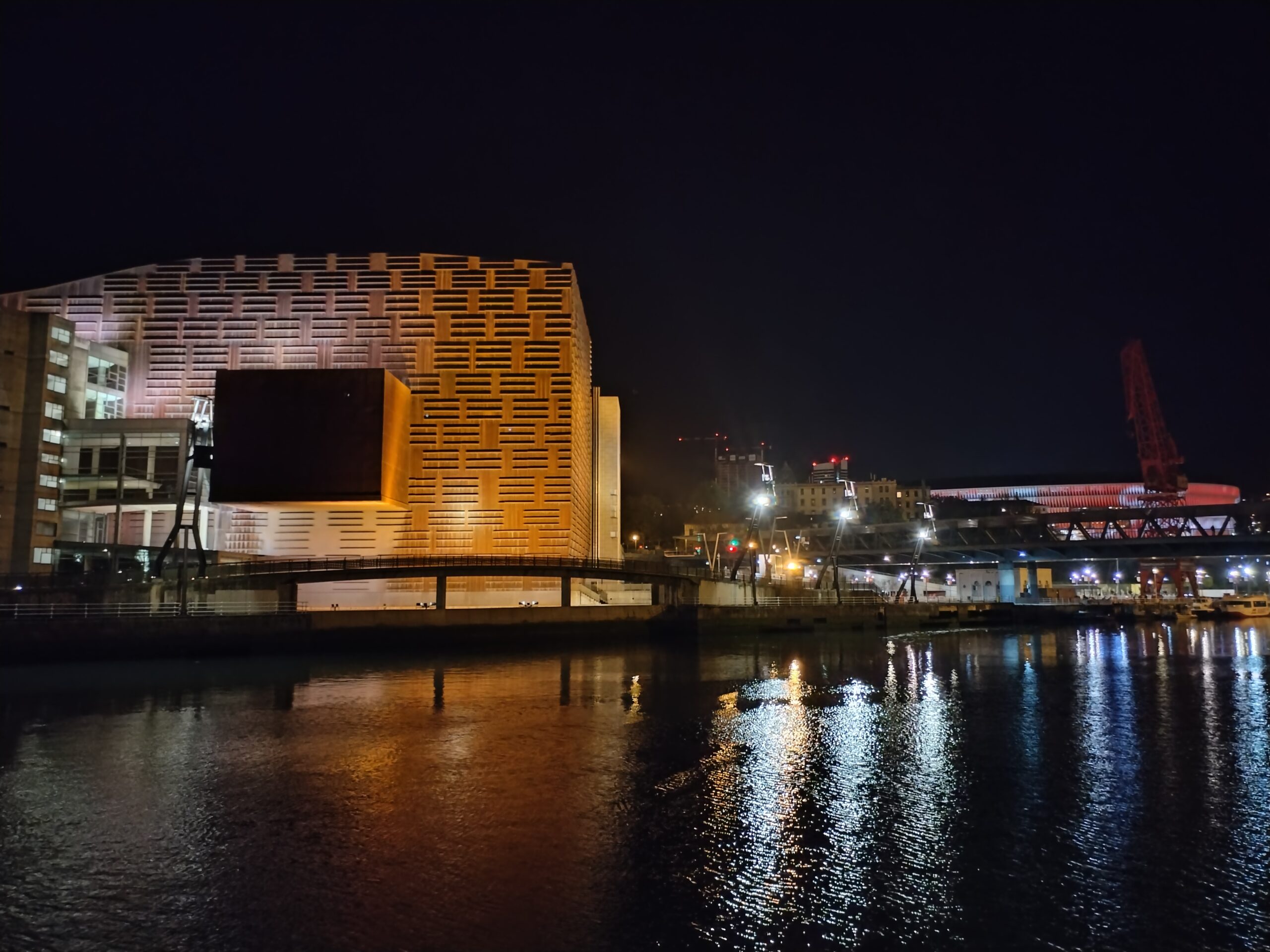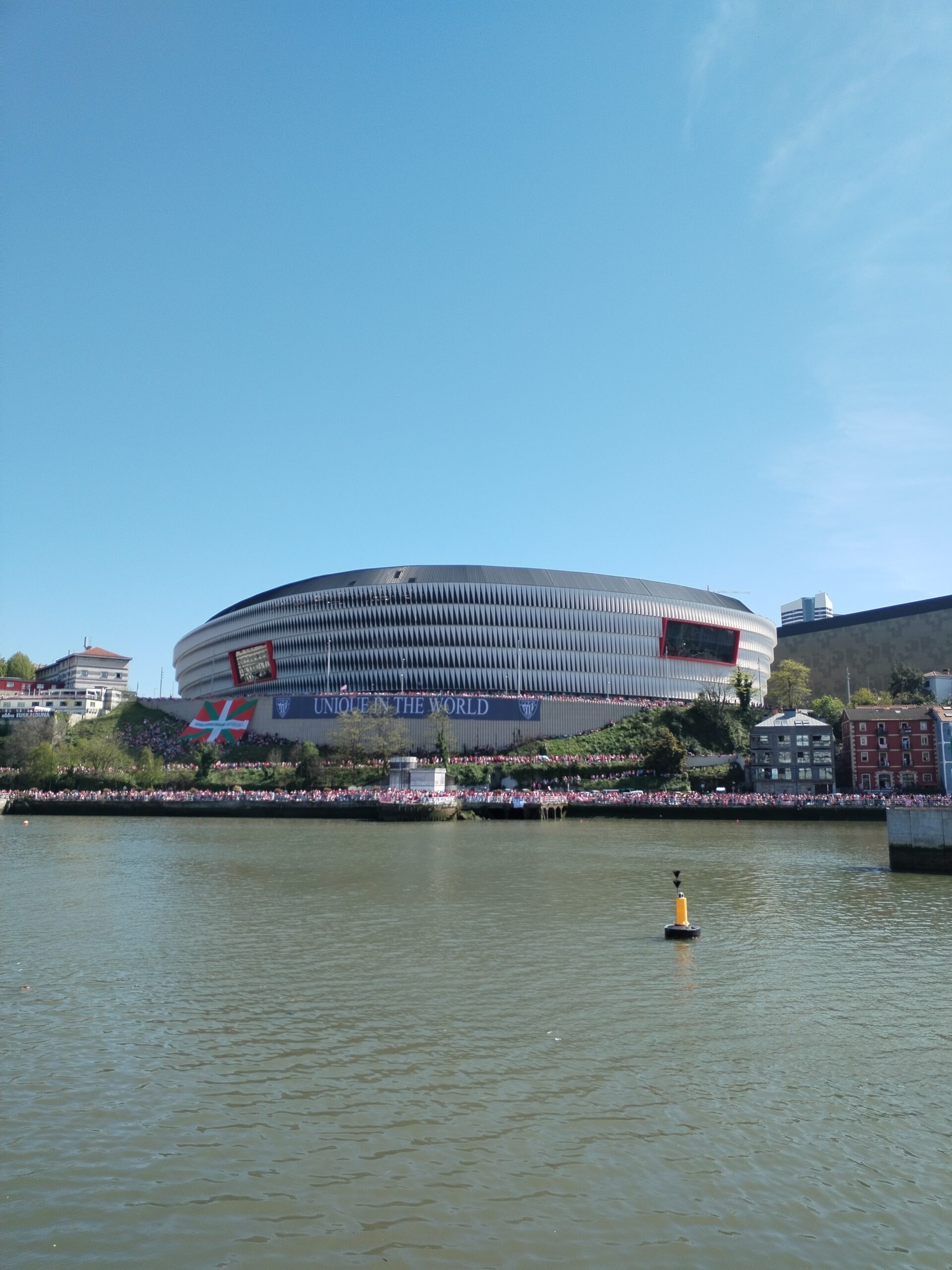The Return of the King
(The Cup, that is)
And the Gabarra, the party barge of Athletic Club de Bilbao
Athletic Club de Bilbao has a soft spot for the Copa del Rey, the Spanish Football Association's showpiece knockout competition. In 2024, Athletic Club has celebrated its cup win in 40 years, making it 24 titles for the club. Athletic fans certainly know how to turn the city's riverside into a major party zone whenever they win.
Changing Times
Athletic Club de Bilbao are a proud team with proud supporters all around the world. The club was literally forged in fire, stone and iron, a fact that you can read more about here. Up until a few years ago, Athletic Club held the record for most Copas del Rey. However, Barça and their iconic squad that contained great ball wizards like Messi, Puyol and Iniesta among others, went on a bit of a run, with 10 wins in 13 years. This left Barça with 31 Cups to Athletic's 24 in the early 2020s. Nevertheless, Athletic want to claw that back and in 2024 emerged winners over Mallorca. After 40 years without a Kings Cup win, they won the day in April 2024 in La Cartuja Stadium in Seville after a penalty shoot-out, and many tens of thousands rejoiced. Apparently, Seville's bar owners rejoiced too, given the Bilbao folk's reputation of generosity and spending heavy whenever they party.
Athletic Club have won two Supercups, played between the League and Cup winners (or Cup runner-up in the case of a League and Cup double), in recent years. Maybe the club deemed the Supercup to be not as important, as the preferred celebration didn't happen with these. What then is their maximum mode of celebration?
Gabarra
The Gabarra is a wide blue river barge which requires towing by a pilot boat when in use. It has been in existence since 1960, being a fairly typical river vessel for transporting freight. Nevertheless, this particular barge has reached iconic status in football terms, which ties in well with the cityfolks' pride in their industrial heritage.
Athletic Bilbao's website contains a nice wee article on the Gabarra. Their article mentions that the Gabarra has only been used for celebrations since 1983, after another trophy drought of 10 years. It was sent to dry dock in 2013, sitting beside Bilbao's Maritime Museum, and is a popular sight. The Gabarra has therefore gained iconic status extremely quickly.
It set out on its journey of celebration in April 2024, with a pilot boat from Pasaia towing it. Pasaia is the port of neighbouring city Donostia, better known internationally as San Sebastián. Hopefully, this hasn't upset San Sebastián's local team, Real Sociedad, and its fans too much. They are indeed a proud bunch too and the Basque Derby of Athletic vs Real is a competitive affair.
1984
The early 1980s were turbulent for Bilbao, once a thriving industrial centre, but then hit by an industrial crisis. You could say that this turbulence played out metaphorically on the pitch at the end of Athletic's 1-0 win against Barça, played in Real Madrid's Santiago Bernabéu Stadium. Dozens of Athletic and Barcelona players and personnel ended up injured in a massive fight at the final whistle, with Argentinian astro Diego Maradona especially getting in the ring. Maradona had had a leg broken previously that season by Athletic defender Andoni Goikotxea, so tensions were high. Tensions finally boiled over as the game finished and an almighty ruck ensued. This was to be Maradona's last game as a Barça player, heading for glory in Italy's Serie A and Napoli.
It was also Athletic's last piece of silverware in quite some time.

Palacio Euskalduna and San Mamés with its nightly light show
A Change in Climate
Back in the old industrial days, the weather in Bilbao was grim. Many believe this was brought on by industrial pollution clouds over the area of Bilbao and its province of Bizkaia (Biscay in English). Basques have their own word for this especially persistent and depressing rainy drizzle commonly experienced here, xirimiri.
There has been quite a bit of climate change recently in the river valley where Bilbao sits. Summers are getting longer and warmer, whereas winters are not non-existent, but not nearly as cold or long as previously. It has reinvented itself somewhat in the post-industrial era, becoming pretty popular with tourists, with museums and citywide artistic expression.
The people though, hold on fiercely to their industrial heritage. This is often expressed in the various sculptures throughout the city and along the Ribera, Bilbao's riverside. You can read more about these metallic sculptures here and they are a focal point for fierce ancestral pride. Xirimiri happens a lot less these days, with sunny blue skies often adorning the city and its surrounding green mountains.
Matchday:
Athletic Club de Bilbao vs RCD Mallorca
The final itself was played the previous Saturday night, on April 6. Kickoff times here can be ridiculous, though the 10PM start works well for potential partytime. Mallorca, the opposition, took the lead early on before Athletic equalised in the second half. Normal and extra time finished level, so penalties decided to whom the spoils would go, with Athletic Club de Bilbao winning the shoot-out 4-2.
That night in Bilbao was warm, loud and busy, with fireworks going off everywhere and the local citizenry revelling way into the wee hours. Fireworks are common here, especially whenever Athletic Bilbao score in any game. Local peñas, the football supporter groups, regularly inform the population of Athletic's progress during matches by setting off rockets. The night of the final had a few more bangs, accompanied by car horns and loud singing.
Meeting up in the Humble Txoko
We live in and around Deustu, a nice wee neighbourhood facing San Mamés stadium on the other side of the river. You can read a bit more about Deustu here. We were comfortably watching the game in what is known as a txoko (a Basque word pronounced /CHAW-kaw/), and a type of local anomaly. Since urban folk generally live in flats, they don't have that much space to party with their friends and kids.
Txokos are rooms, maybe including a kitchen, possibly owned by a family or group of friends and maybe rented out to the public for special occasions. We found ourselves in Arbat, a txoko by the riverside in Deustu and overlooking the stadium, which you can see here. As the adults of our group had to think about the young ones for the final, a large room with a kitchen and big screen to watch the footie worked well. Bring your kids, your food and drink, and the rest of the night sorts itself out.
Happily, the result turned out in Athletic's favour, setting the scene for the heroic squad's homecoming the following Thursday.
Celebration Day
FInally, the day arrives for the return to Bilbao's waters of the big cup. The trophy itself is massive and club captain Iker Muniain looked as if he was about to fall over whenever he was holding it aloft at the presentation.
The celebration had been programmed to happen between 4:30 and 6:30PM between the port out on the mouth of the estuary at Getxo, a scenic place well worth a visit, and the city hall at Arenal and beside Bilbao's old town, which you can see more of here. We manage to get a place on the post-industrial artificial river island of Zorrotzaurre, a neighbourhood also well worth the visit due to its counter-culture and bars improvised from old industrial ruins. One particularly nice wee bar is El Jardín Secreto (The Secret Garden). Our group heads for there and we watch proceedings from the side of the water outside.

Celebrations in the shadow of San Mamés. Photo courtesy of Antonio García at alphax.eus
The Gabarra comes accompanied by dozens of other boats, with rowing teams, yachts and a supporters group on a pirate ship which nearly crashes into another boat. The fleet is impressive, and the fire brigade and lifesavers dart through the bigger ships, keeping a vigilant eye.

Living the dream. Photo courtesy of Antonio García at alphax.eus
More to come from Athletic Club de Bilbao?
We definitely hope this happens as the city really comes to life during a football celebration. The previous days had been fun and exciting and even the fact that Athletic Club de Bilbao were in a final set the place alight with excitement. It's nice to see an entire city and province draped in their team's colours, and even those with next to no interest in football can get in on celebrations.
Bilbao is a city where open space is used very well for street parties and festivals, so mass celebration is a regular occurrence. Something will be happening from one month to the next, so any time of the year is good to visit. You can read more about the riverside here and metal monuments in the city, especially the riverside sculptures here.
It's definitely worth a visit any time of the year, though you'll have a whale of a time if you coincide with the football.

San Mamés on Gabarra celebration day, after Athletic's victory in the Copa del Rey
